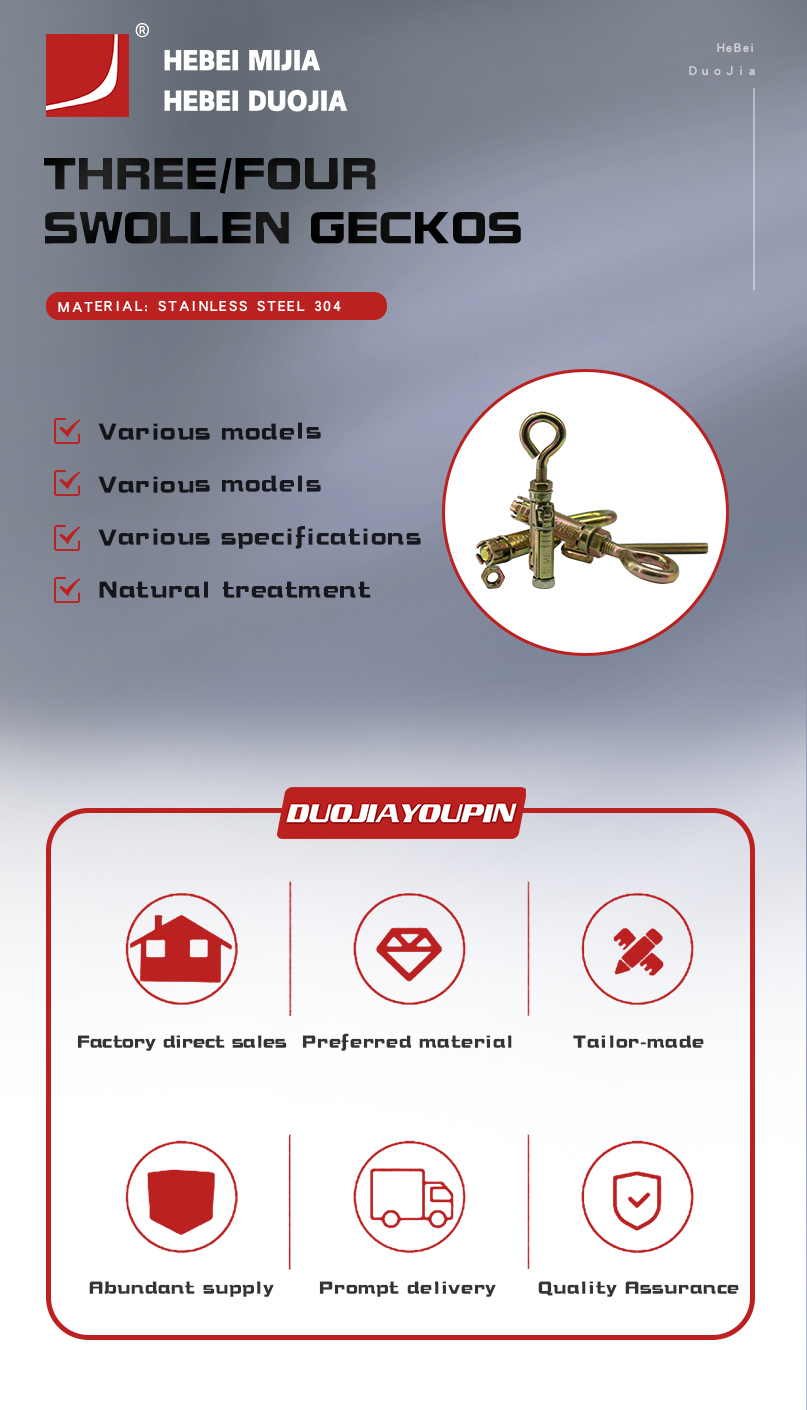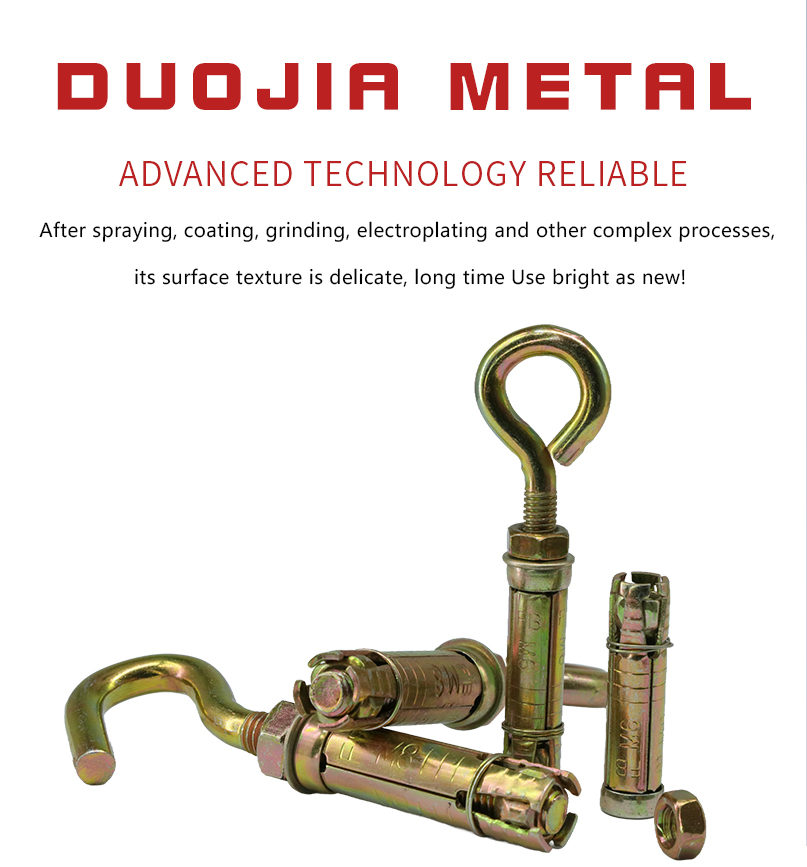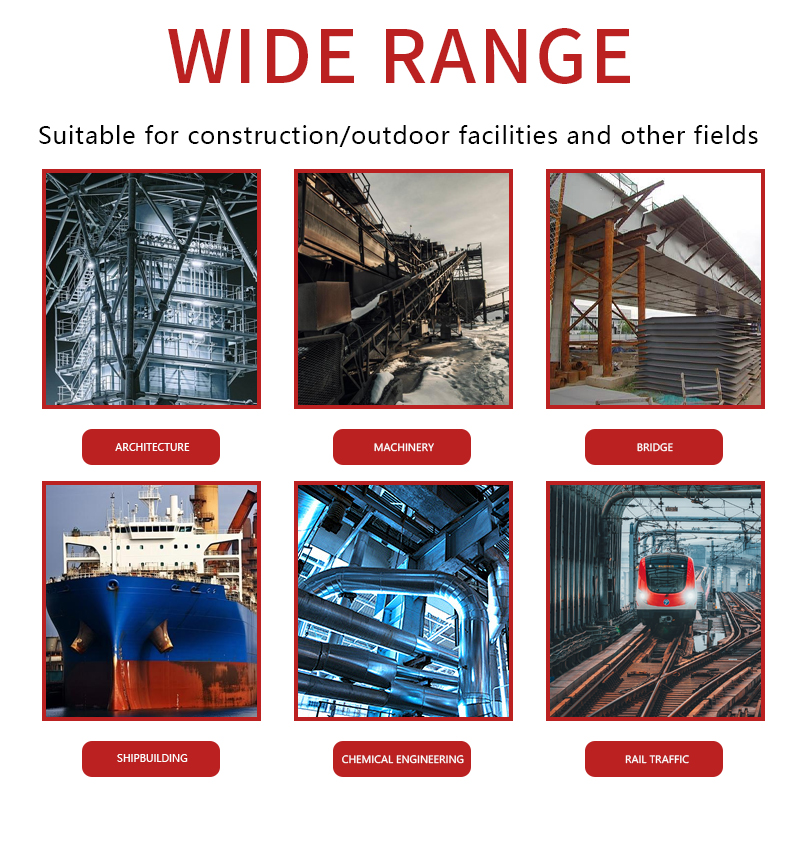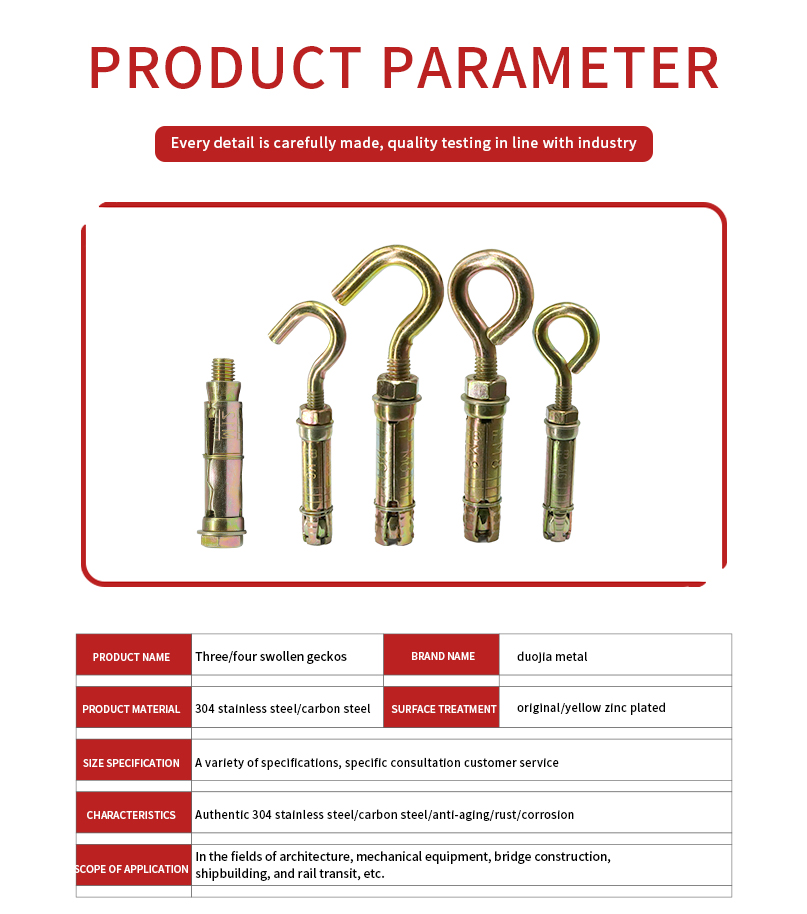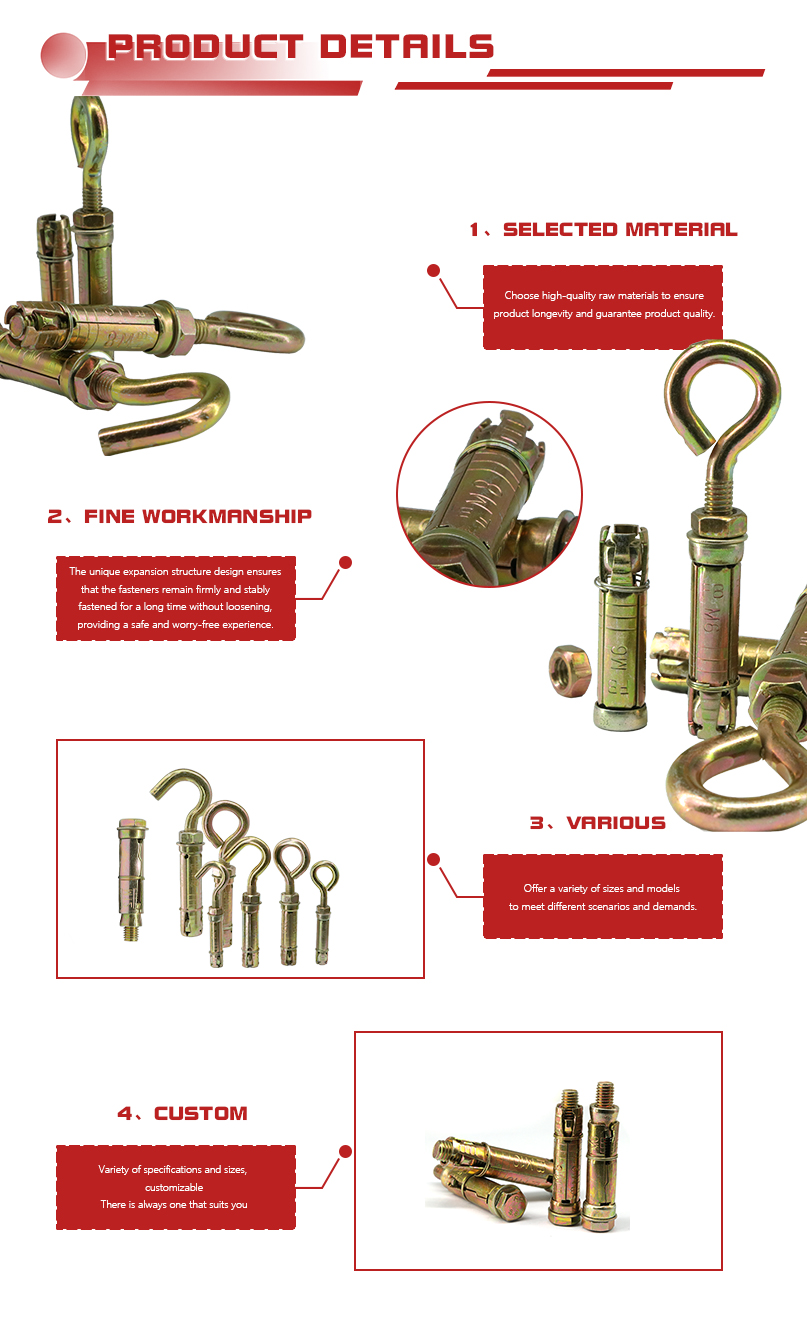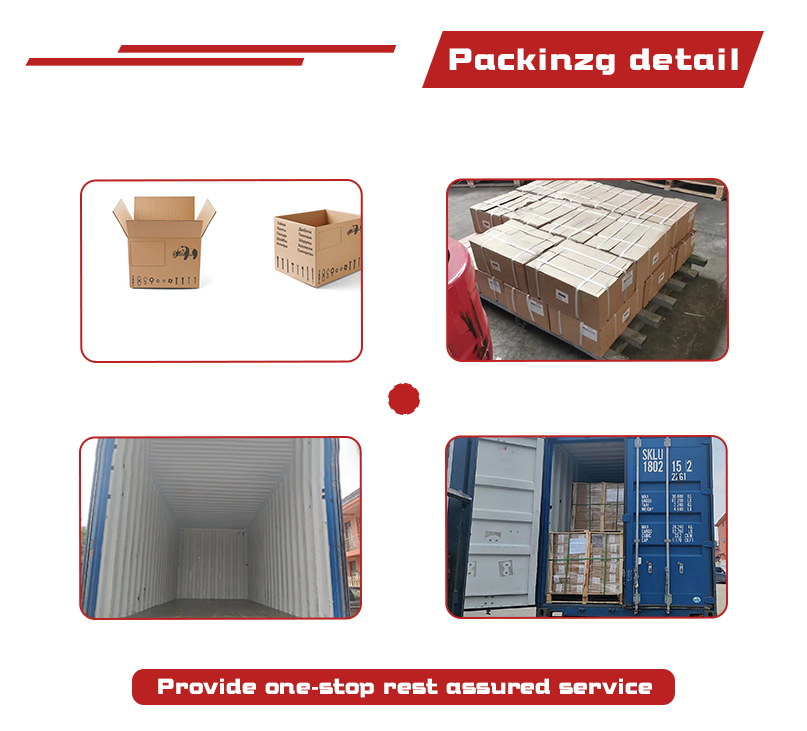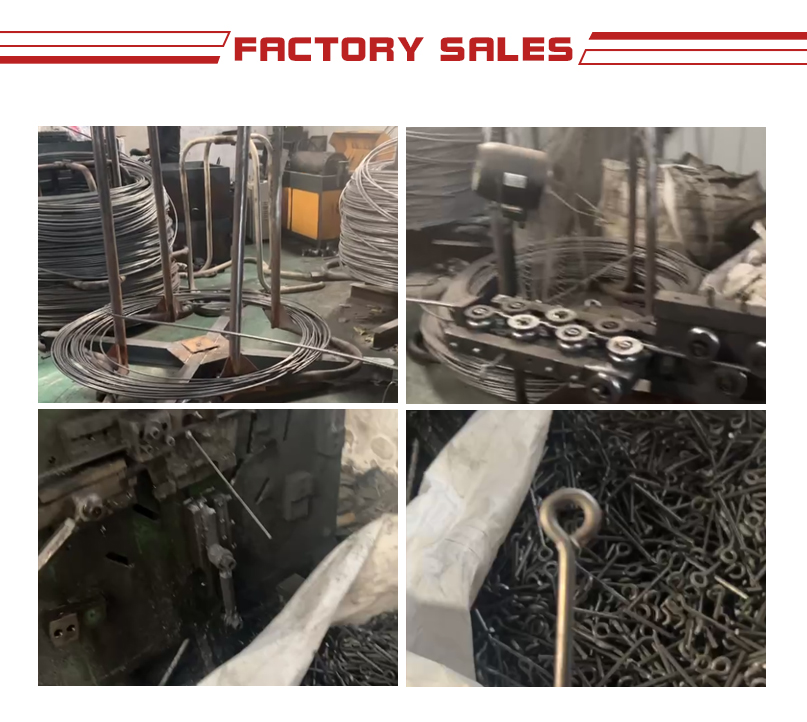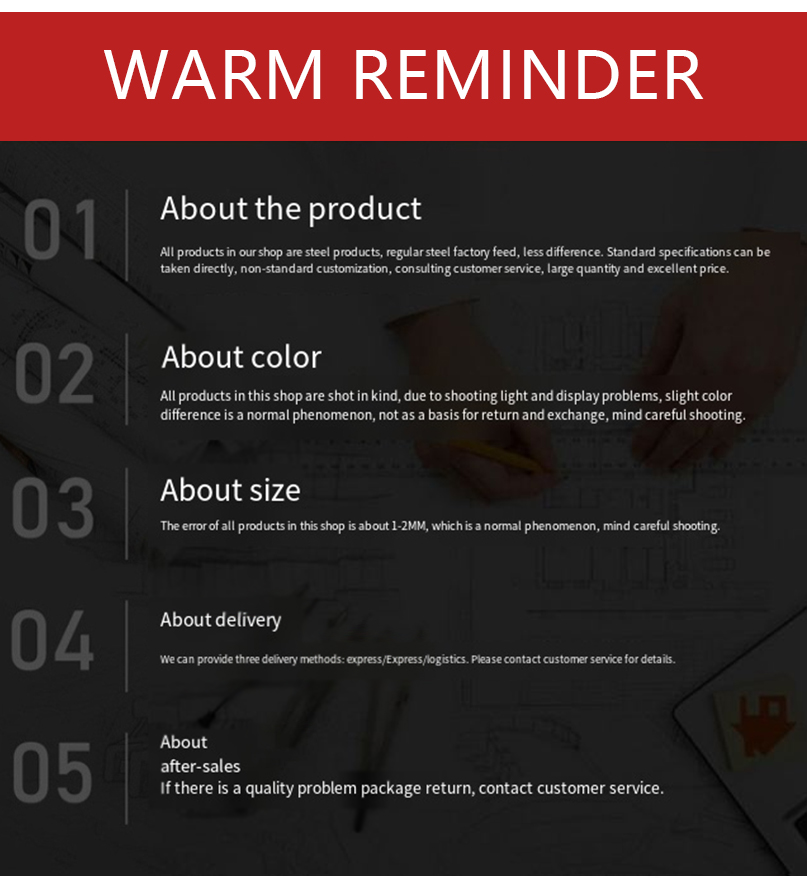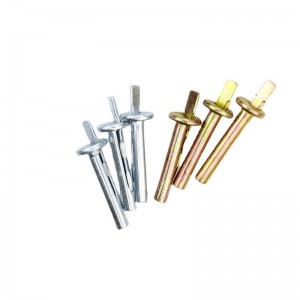This 4Pcs Fixing Anchor with Eye Hookbolt is a commonly – used fastening connector. It is typically made of high – strength steel, and its surface is treated with anti – corrosion processes such as galvanization, presenting a golden appearance. This effectively prevents rust and enhances its durability in various environments.
✔️ Material:Stainless Steel(SS)304/Carbon steel
✔️ Surface:Plain/original/White Zinc Plated/Yellow Zinc Plated
✔️Head:HEX/Round/ O/C/L BolGrade:4.8/8.8
Product Introduction
This 4Pcs Fixing Anchor with Eye Hookbolt is a commonly – used fastening connector. It is typically made of high – strength steel, and its surface is treated with anti – corrosion processes such as galvanization, presenting a golden appearance. This effectively prevents rust and enhances its durability in various environments.
Structural Features: It consists of an eye hook head and an expansion screw rod. The eye hook head facilitates connection with ropes, chains, etc., and is used for operations such as lifting and hanging. The expansion screw rod part can expand and open during installation, closely engaging with base materials like walls to provide reliable anchoring force.
Application Scenarios: It is widely applied in construction, home decoration, industrial installation, and other fields. For example, in construction, it can be used to fix lightweight components such as pipe supports and cable trays. In home settings, it can be used for installing curtain rods and shelves.
Usage Instructions
- Pre – installation Preparations
- Specifications Confirmation: Based on actual usage requirements, confirm whether the specifications of the anchor bolt are appropriate. Check parameters such as its maximum load – bearing weight to ensure it can meet the weight requirements of the object to be fixed.
- Appearance Inspection: Check whether the surface of the anchor bolt is damaged or deformed, and whether the galvanized layer is intact. If there are defects, it may affect its performance and service life, and it should be replaced in a timely manner.
- Tool Preparation: Prepare installation tools such as an impact drill and a wrench. Select a drill bit of the appropriate diameter according to the specifications of the anchor bolt. Generally, the diameter of the drill bit should match the outer diameter of the expansion tube of the anchor bolt.
- Drilling
- Positioning: On the surface of the base material (such as a concrete wall or brick wall) where the anchor bolt needs to be installed, use tools such as a tape measure and a level to accurately measure and mark the drilling position. Ensure the position is accurate to avoid subsequent installation deviations.
- Drilling Operation: Use an impact drill to drill a hole perpendicular to the surface of the base material. The drilling depth should be slightly greater than the effective anchoring depth of the anchor bolt. For example, if the effective anchoring depth of the anchor bolt is 50mm, the drilling depth can be controlled at 55 – 60mm. During the drilling process, maintain stability to avoid an overly large hole diameter or an irregular hole wall.
- Installing the Anchor Bolt
- Cleaning the Hole: After drilling is completed, use an air pump or a brush to clean the dust and debris in the hole to ensure the hole is clean. If there are impurities in the hole, it will affect the anchoring effect of the anchor bolt.
- Inserting the Anchor Bolt: Slowly insert the anchor bolt into the hole to ensure that the expansion tube is fully inserted into the hole. Do not use excessive force during insertion to prevent damage to the expansion tube.
- Tightening the Nut: Use a wrench to tighten the nut. As the nut is tightened, the expansion tube will expand and open in the hole, closely bonding with the base material. Pay attention to applying even force during tightening to prevent the anchor bolt from tilting.
- Connecting the Object
- Checking the Anchoring Effect: Before connecting the object, gently shake the anchor bolt to check if it is firmly fixed. If it is loose, re – tighten the nut or check if there are problems in the installation process.
- Connection Operation: Connect the object to be fixed to the eye hook head of the anchor bolt through a rope, chain, etc. Ensure the connection is firm to avoid situations such as detachment during use.
- Post – use Maintenance
- Regular Inspection: After using for a period of time, regularly check the tightness and surface condition of the anchor bolt. Check if the nut is loose and if the galvanized layer is worn or corroded.
- Maintenance Measures: If the nut is found to be loose, tighten it in a timely manner. If the galvanized layer is damaged, anti – rust paint can be applied for protection to extend the service life of the anchor bolt.















